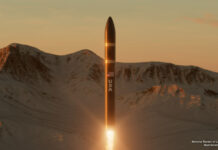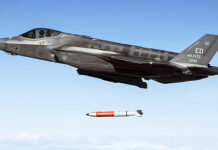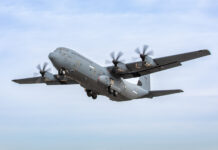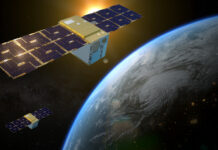After three decades of development, the THAAD ballistic missile defence (BMD) system – once considered destined to fail – is praised as the most advanced BMD system in the world.
As defined by the US Defense Department’s Missile Defense Agency (MDA), the Terminal High Altitude Area Defense (THAAD) element provides the US military’s Missile Defense System (MDS) “with a globally-transportable, rapidly-deployable capability to intercept and destroy ballistic missiles inside or [just] outside the atmosphere during their final, or terminal, phase of flight.” It is designed to provide cover to a large area, to defend US and allied/partner forces and facilities, as well as civilian populations and infrastructure.
THAAD is configured to combat short- and medium-range ballistic missiles (SRBMs; MRBMs) and retains a limited capability against intermediate range ballistic missiles (IRBMs). The interceptor missile does not employ an explosive warhead, but destroys the target through the kinetic energy of a direct impact (“hit-to-kill” method.) As an upper tier BMD system, THAAD intercepts are conducted at high altitudes. Precise performance parameters are classified. The maximum engagement range is generally estimated to be approximately 200 km; the minimum intercept altitude is thought to be circa 40-50 km, with a maximum intercept altitude of 150 km. High altitude intercept has two main advantages: any Nuclear, Biological, or Chemical (NBC) payload carried aboard the incoming warhead will be dispersed, reducing its lethality when it does reach the ground.
Secondly, should the high-altitude intercept attempt fail, there will be time for a second intercept attempt by THAAD or another BMD system.
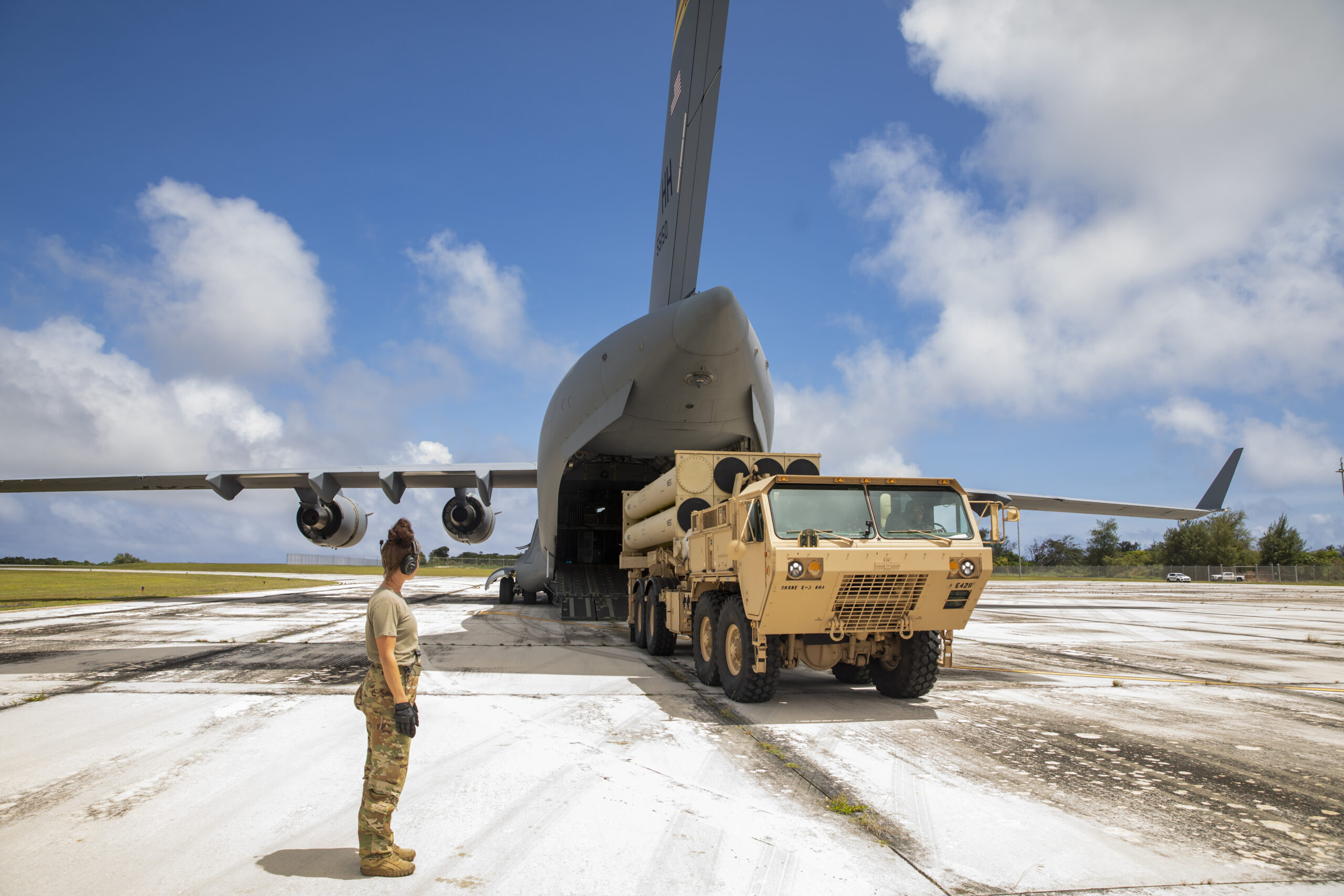
While planning and procurement are under the aegis of the MDA, THAAD batteries are operated and maintained by the US Army Air Defense Artillery. Via their command and control element, THAAD batteries are tied into the greater MDS architecture. They primarily exchange tracking and targeting data with the Navy’s AEGIS BMD system (which, like THAAD, is an upper-tier interceptor system) and the Army’s lower tier PATRIOT system to form a layered intercept capability. The networking takes place via the US military’s central Command and Control, Battle Management, and Communications (C2BMC) system. C2BMC is responsible for persistent target acquisition, tracking and cueing of targets as well as distribution of fire-control quality data to all elements of the BMD system. Sensor data from across the BMD and aerospace surveillance/early warning spectrum flow into the C2BMC, where it is collated into a comprehensive threat picture and used to calculate an optimised response by the various elements of the BMD system. As described by the Army, each system targets different portions of an enemy missile’s trajectory, or even different threats, and a networked intelligence and communication system ensures that one or more of the interceptor systems will be launched when needed.
Components of THAAD
Lockheed Martin Missiles and Fire Control is the prime contractor for the THAAD program, and also provides the interceptor missiles. Major components of THAAD include the launcher vehicle, interceptor missile, radar, as well as a fire control and communications system. A standard battery configuration consists of six launcher vehicles with a total of 48 launch-ready missiles, one command, control and communications element, and one radar. However, a battery can operate as many as nine launchers at a time.

Launchers are mounted on Heavy Expanded Mobility Tactical Truck (HEMTT) A2 vehicles produced by Oshkosh Defense. The truck-mounted launcher can be transported into a theatre of operations by transport aircraft or by ship; within theatre it can move via C-130 aircraft, rail, road or off-road. The HEMTT’s overland mobility includes the ability to climb a 60% gradient and ford 1.2 m of water. Each launcher carries eight interceptor missiles. After launching its missiles, the launcher can be quickly reloaded in the field.
In October 2022 Lockheed Martin announced the delivery of the 700th THAAD interceptor missile to the MDA. The previous milestone of 600 delivered missiles was set in August 2021. The 6.2 m long interceptor missile weighs 662 kg at launch. It consists of a single solid-fuel booster stage topped by a liquid-propellant-filled kinetic kill vehicle. The missile attains a speed of Mach 8. At this speed it would reach its maximum intercept range within less than 90 seconds, offering a manoeuvring target little time for evasive action.
THAAD utilises the Raytheon Integrated Defense Systems AN/TPY-2 radar in terminal mode to guide the interceptor missile towards the target, providing updated tracking data until impact. The high-resolution X-band phased-array radar can distinguish between missile payloads and other objects such as missile debris. When deployed in terminal mode the AN/TPY-2, is capable of engaging all classes of ballistic missile threats, and has a detection and cueing range of 1,000 km. The 12.8 m long, 34 tonne radar antenna unit has two rear axles; it is towed for transportation and detached for operations.
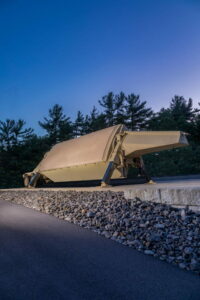
The fire control and communications platoon connects the various THAAD subsystems together; plans and executes intercept solutions; and provides an interface for the THAAD batteries to network with external command and control echelons and integrate with the C2BMC.
Additional essential elements of the battery include Humvee support trucks, a prime power unit generator vehicle producing 4,160 volts, electronic equipment and data processing unit, as well as a cooling vehicle to maintain the radar’s operational temperature. The various components of the battery need to be connected to one another via fibre optic cable to enable operation. According to US Army personnel directly involved with THAAD operations, setting up or moving the unit is a matter of hours or even days.
THAAD to Date
The THAAD concept’s origins date to 1987, and the first flight test took place in April 1995. Initially the program fared poorly. The first two flight tests – neither of which involved an intercept attempt – were successful. However, the next six flights – all of which involved intercept attempts – ended in failure. The program was restructured, and flight testing resumed in August 1999 with the successful exoatmospheric destruction of a warhead that had separated from its booster; the intercept occurred at an altitude of 147 km. Since then, THAAD has demonstrated a high degree of effectiveness and reliability. All 16 test intercepts conducted between 1999 and 2019 were successful, as were numerous non-intercept and interoperability experiments. According to an assessment by the Congressional Research Service published in November 2022, many experts currently consider THAAD to be the most advanced BMD system in the world.

Over the past two decades the MDA and Lockheed Martin have worked to further develop the system’s capabilities, networking options, and reliability. Two major breakthroughs were achieved in the 2019-2022 timeframe.
In 2020 the MDA was able to demonstrate direct integration of the PATRIOT air defence system into the THAAD fire control system. During the first experiment in February 2020, THAAD successfully provided targeting data acquired by the AN/TPY-2 radar to the PATRIOT weapon system, which was able to develop an intercept solution. On 1 October 2020, the exercise was repeated, and this time the PATRIOT unit successfully intercepted the target missile. By 2022 the integration reached a higher level. On 29 March 2022, the THAAD system successfully launched a PAC-3 MSE (Missile Segment Enhanced) to intercept a tactical ballistic missile target without the support of a PATRIOT fire unit. This validated the concept of attaching one or more PATRIOT launchers to a THAAD battery. Full integration of the PATRIOT PAC 3 MSE launchers into the THAAD fire control system permits THAAD to directly control intercept of missiles flying too low for the main system to engage, and enhances the PATRIOT’s odds of a successful intercept. As the AN/TPY-2 has considerably greater range than the PATRIOT batteries’ organic radar suite, this new capability enables PATRIOT interceptors to be effectively deployed at the missile’s maximum range. It further enhances the flexibility of the greater missile defence system, permitting a more efficient allocation of interceptor missiles, expansion of the defended terrain while simultaneously preserving the more sophisticated THAAD interceptors for the most challenging targets.
The second major development is the remote fire kit which was introduced in 2019. It enables dispersal of the individual launchers of a THAAD battery hundreds of kilometres apart from one another and from the battery’s radar and fire control unit. The interface to the battery’s radar and fire control centre runs through the Transportable Tactical Command Communications system which deploys with the individual launcher. The dispersed launch capability creates a more layered defensive architecture and increases the area the system can defend. To date this capability has been tested on the Mariana Islands and on the Korean peninsula, where the tactical requirement to counter potential adversary missiles is deemed the greatest.
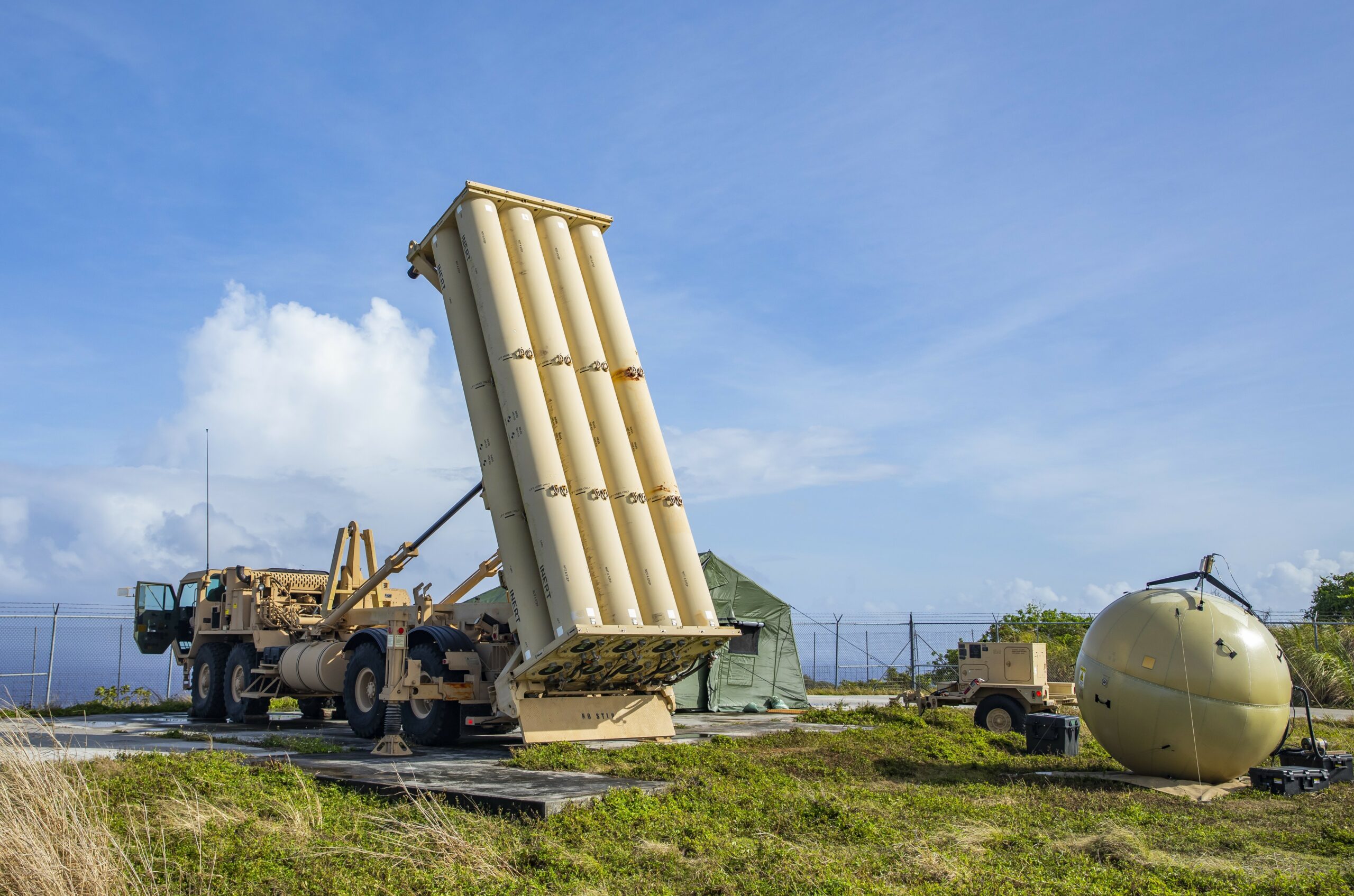
Moving Forward
Fielding of the first operational THAAD battery began in 2008. Seven batteries are currently in service, the last of which was established in 2016. Two of these batteries are currently deployed overseas, one in South Korea and one on Guam. Intermittent and sometimes prolonged deployments to NATO territory, Japan and several Middle Eastern have previously been conducted.
The system is also available for export. In 2017 the United States government agreed to sell THAAD to Saudi Arabia. The formal contract for Lockheed Martin to deliver 44 launchers and 360 missiles to Riyadh was signed in 2020, with a target initial delivery date of 2023. According to the US Army Corps of Engineers, the first four of several planned operating sites will be ready by 2026, with the remainder complete by 2028. The total acquisition cost for Saudi Arabia will amount to circa USD 15 Bn.
The United Arab Emirates became the first foreign operator of the BMD system, signing a contract for two THAAD batteries in 2011, and sending its first crews to the US for training in 2015. The UAE also became the first nation to achieve a combat intercept, using THAAD to down a Houthi-launched missile on 17 January 2022. In August 2022 the US State Department announced approval for the sale of an additional 96 interceptor missiles plus support equipment to the UAE.
Back in the United States, the MDA in April 2022 awarded Lockheed Martin a contract to produce an eighth battery which is expected to be fielded in 2025. “With 16 of 16 successful flight test intercepts, and recent combat success clearly documenting the effectiveness of THAAD, adding an eighth battery will further enhance readiness against existing and evolving ballistic missile threats,” said Lockheed Martin Missiles and Fire Control, Upper Tier Integrated Air and Missile Defense vice-president Dan Nimblett when announcing the new contract.
Beyond the plans for an eighth battery, Lockheed Martin has announced that it continues to implement incremental capability improvements within the weapon system to improve capability against current and emerging threats. The Pentagon continues to finance this initiative, and the MDA has requested USD 220 M for THAAD development efforts in FY 2024. The funds would support continued development and integration of system upgrades to enhance reliability and readiness, and improve the ability to engage emerging threats across the current target spectrum. An additional USD 47.6 M is requested for terminal defence testing of THAAD as part of the MDA’s comprehensive Integrated Master Test Plan. The planning includes flight and ground testing as well as inclusion in wargames and exercises. Operations and maintenance of THAAD batteries are expected to cost an additional USD 89.3 M in FY 2024.
Beyond these upgrades of the base system, Lockheed Martin has for the past several years proposed development of an Extended Range variant or ‘THAAD-ER’ designed to counter hypersonic glide vehicles (HGVs). The extended range would require a two-stage interceptor missile and a redesign of the launcher. Lockheed Martin has postulated that an initial operational capability could be achieved within four years once development were initiated. To date, the MDA has not agreed to finance development of an ER variant.
Sidney E. Dean



